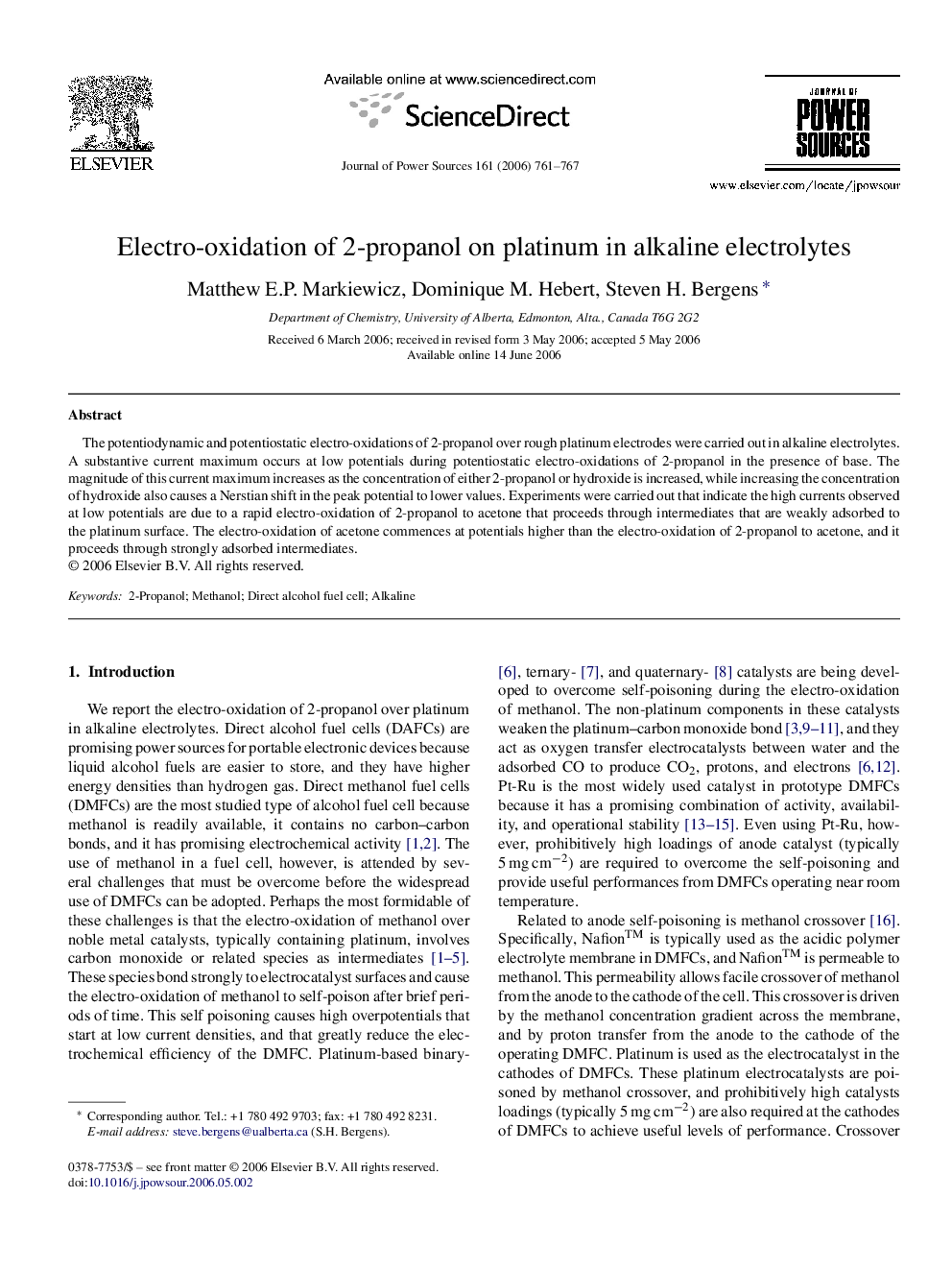| Article ID | Journal | Published Year | Pages | File Type |
|---|---|---|---|---|
| 1292016 | Journal of Power Sources | 2006 | 7 Pages |
The potentiodynamic and potentiostatic electro-oxidations of 2-propanol over rough platinum electrodes were carried out in alkaline electrolytes. A substantive current maximum occurs at low potentials during potentiostatic electro-oxidations of 2-propanol in the presence of base. The magnitude of this current maximum increases as the concentration of either 2-propanol or hydroxide is increased, while increasing the concentration of hydroxide also causes a Nerstian shift in the peak potential to lower values. Experiments were carried out that indicate the high currents observed at low potentials are due to a rapid electro-oxidation of 2-propanol to acetone that proceeds through intermediates that are weakly adsorbed to the platinum surface. The electro-oxidation of acetone commences at potentials higher than the electro-oxidation of 2-propanol to acetone, and it proceeds through strongly adsorbed intermediates.
